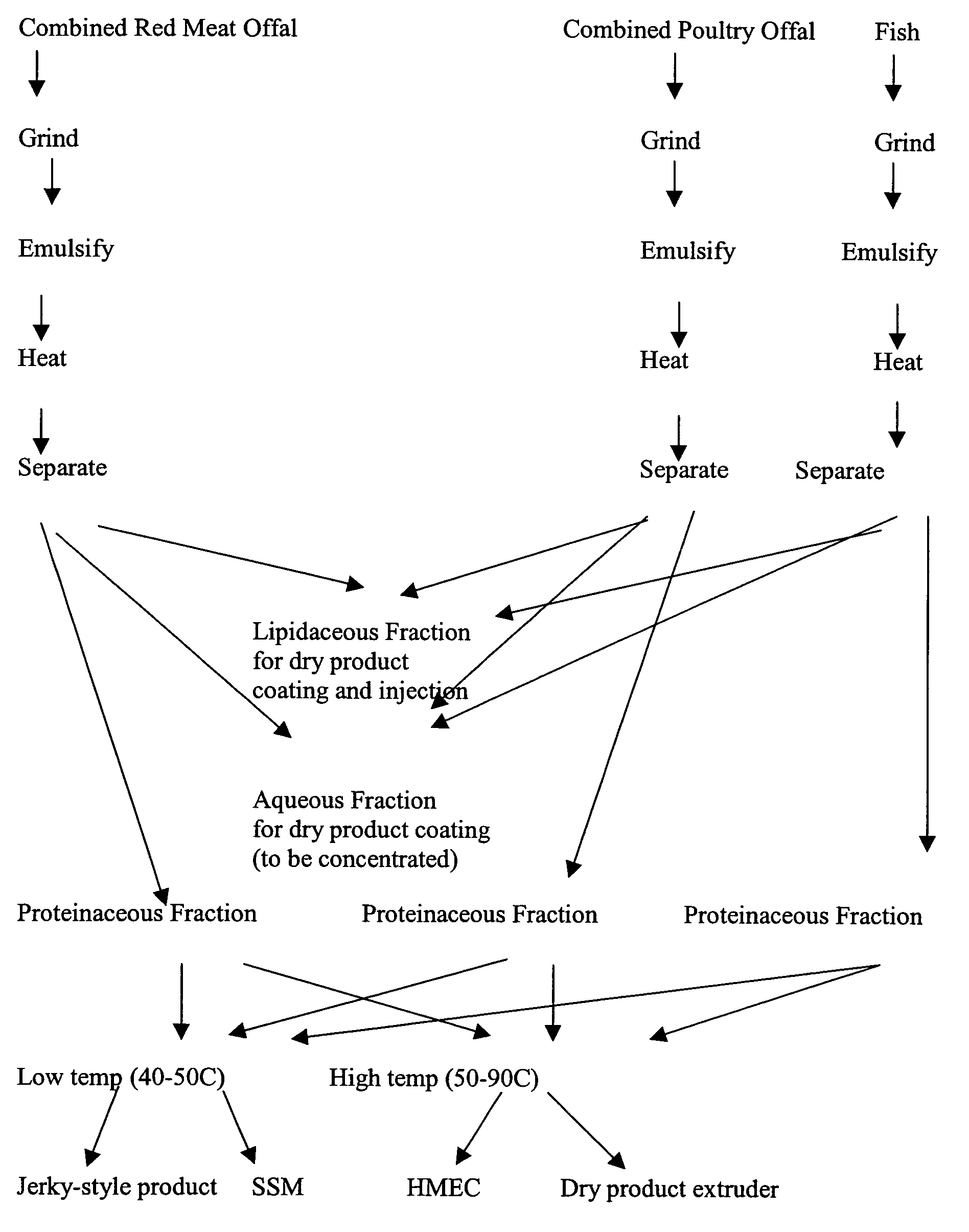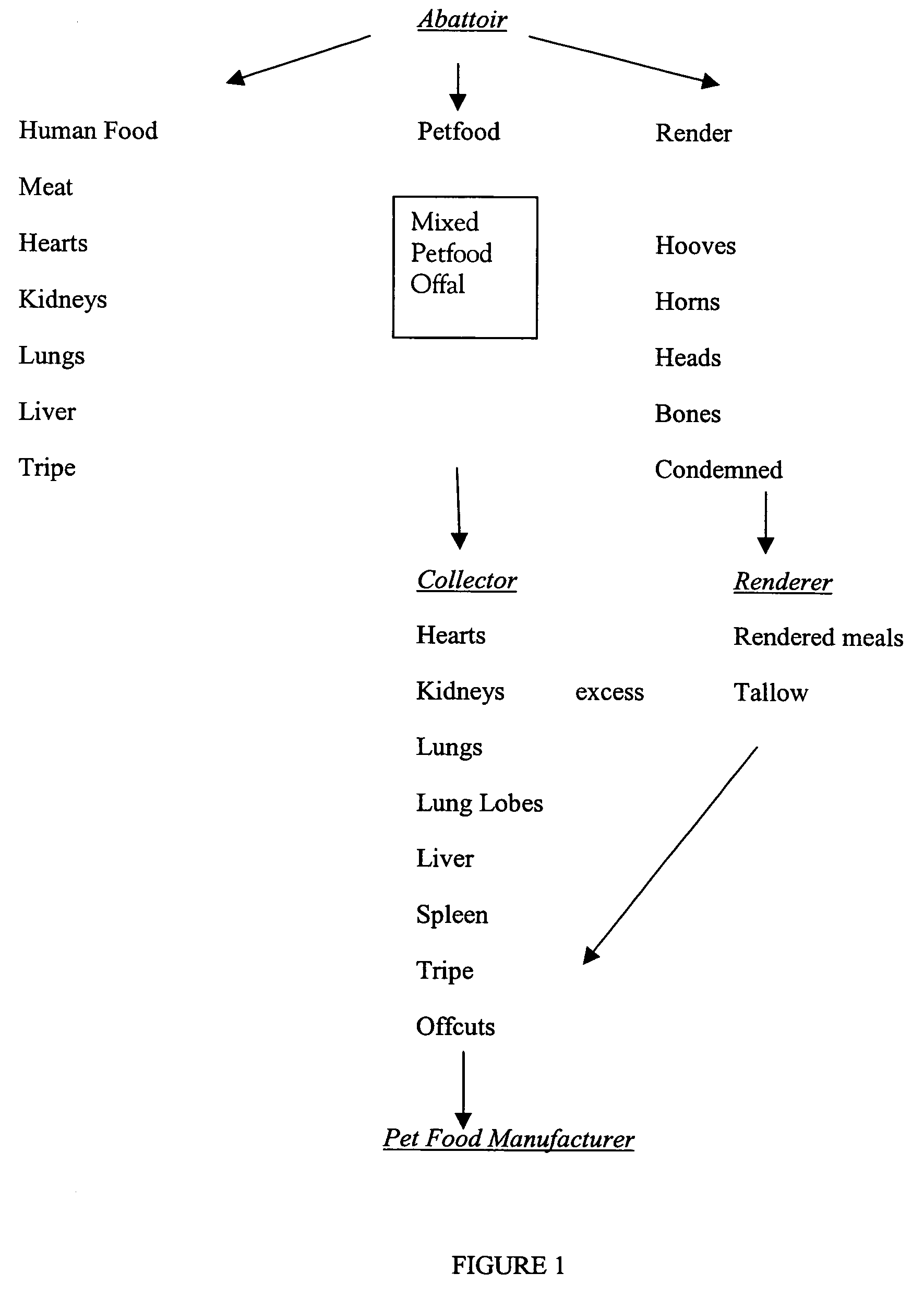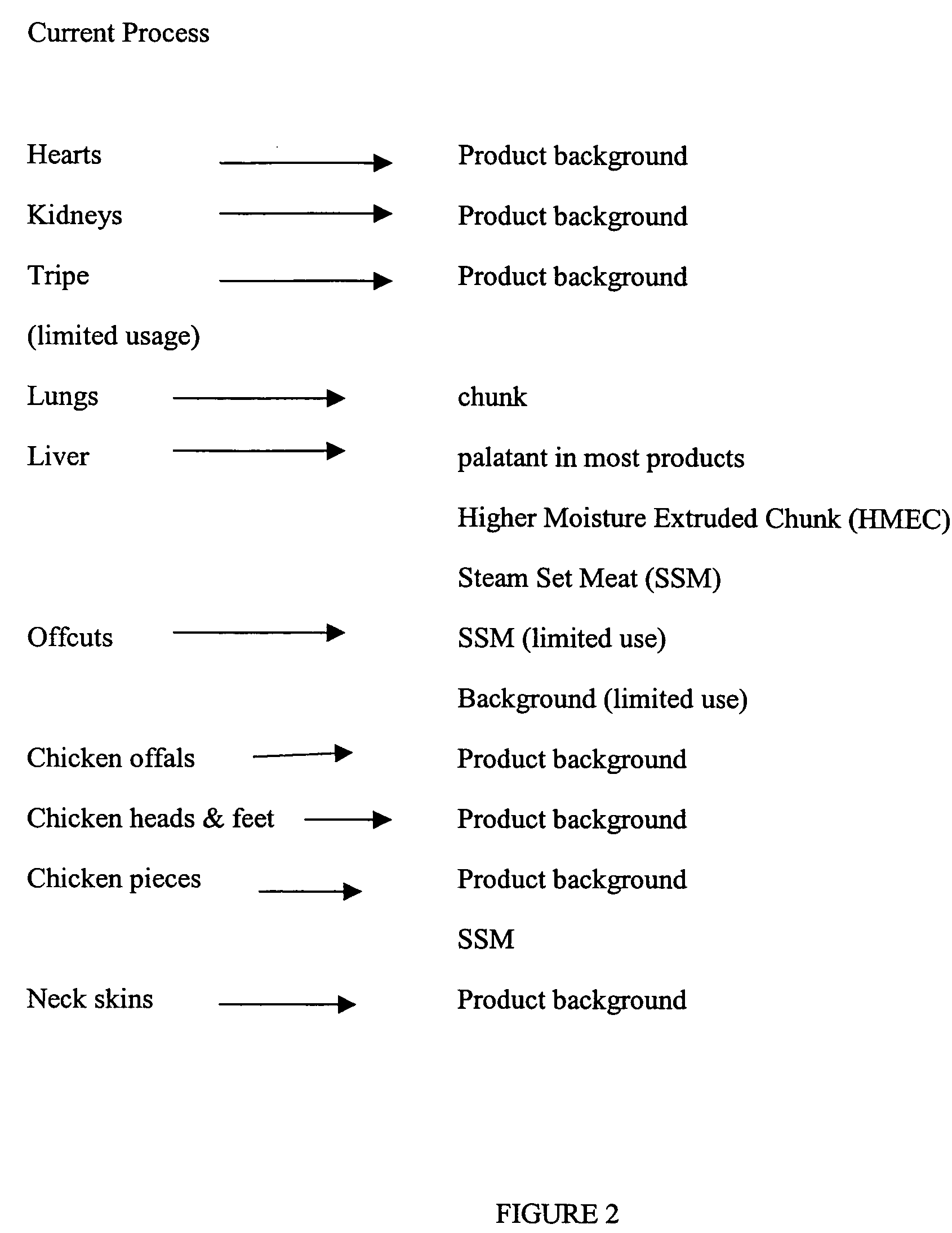Method of utilizing offals for pet food manufacture
- Summary
- Abstract
- Description
- Claims
- Application Information
AI Technical Summary
Benefits of technology
Problems solved by technology
Method used
Image
Examples
Embodiment Construction
[0092]At the commercial abattoir, unsorted pet food grade offals, as per those discussed above in the prior art, are collected in bins according to normal practices. These bins are shipped to the site of the commercial pet food manufacturer. The offals may be chilled to below 10° C., depending on the length of the transport chain.
[0093]Once received, the offals are ground through a continuous meat grinder, such as those manufactured by e.g. Weiler & Co., or Wolfking & Co., having a feed screw of a standard type suitable for frozen or fresh materials, and a holeplate hole size are between 3 mm and 10 mm.
[0094]The offals are then ground through a fine grinder, such as a meat slurry emulsification unit, for example those machines manufactured by Karl Schnell or Wolfking & Co. The holeplate hole sizes recommended for this operation are between 1.7 mm and 6.0 mm. The target output temperature of the material exiting this fine grinding unit operation should not exceed 25-35° C.
[0095]At th...
PUM
 Login to View More
Login to View More Abstract
Description
Claims
Application Information
 Login to View More
Login to View More - R&D
- Intellectual Property
- Life Sciences
- Materials
- Tech Scout
- Unparalleled Data Quality
- Higher Quality Content
- 60% Fewer Hallucinations
Browse by: Latest US Patents, China's latest patents, Technical Efficacy Thesaurus, Application Domain, Technology Topic, Popular Technical Reports.
© 2025 PatSnap. All rights reserved.Legal|Privacy policy|Modern Slavery Act Transparency Statement|Sitemap|About US| Contact US: help@patsnap.com



